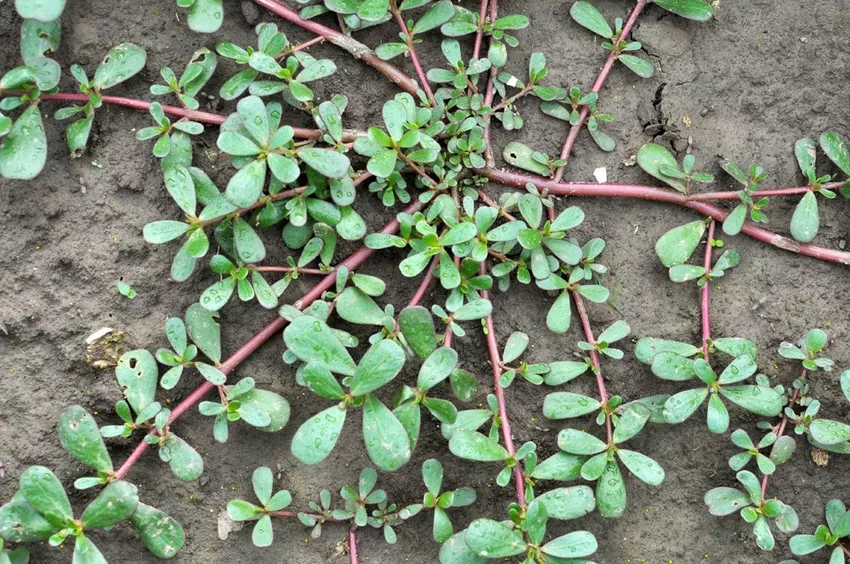Purslane is rich in vitamin C and valuable omega-3 fatty acids. It is therefore worthwhile to grow the burzelkraut yourself. Find out how it works here.

Purslane has been completely wrongly forgotten in our latitudes. Now the wild vegetables with their thick fleshy leaves are slowly reclaiming their place in the vegetable garden. The good thing: purslane grows luxuriantly and can be harvested over a long period of time. You can then use the he althy ingredients of the old medicinal plant in a fresh salad or as an ingredient in herbal quark.
Origin
Purslane is native to Africa and Asia Minor. The plants belong to the purslane family. In our latitudes, purslane has a long history. As early as the 12th century, the medieval healer Hildegard von Bingen reported on the plant in her writings.
Important:
You should not confuse the real purslane described here with the winter purslane. This wild plant belongs to a different plant family and is native to coastal North America.
The importance of purslane as a food
Purslane tastes best immediately after harvest. Use the herb to make herb butter, dress up salads or refine soups. Since purslane has a sour, nutty and slightly s alty taste, you can save on s alt when preparing it.
It can also be used as a vegetable. The preparation can be done as usual with spinach. Even the flower buds are edible. They taste similar to capers and can be used in the same way.
Purslane contains ingredients that have a positive effect on he alth:
- Vitamin A=improves vision, promotes he althy skin
- Vitamin C=boosts the immune system, strengthens the body's defences
- Iron=promotes blood formation
- Magnesium=ensures strong bones and nerves
- Potassium=can support the body's gentle drainage
It's not for nothing that purslane is considered a superfood.
Location and Ground
Purslane grows best in a warm and sunny spot. You should loosen heavy soils well and mix them with sand. idealsPurslane finds growth conditions in a well-drained substrate with a high proportion of sand. Furthermore, the soil should not be too moist.
Plant Purslane

Purslane can be sown directly outdoors. You can start doing this from the beginning of May. Depending on the region and the weather, you can sow purslane until the end of August or mid-September. The germination time is then about 10 to 20 days. You can then harvest the purslane about a month after sowing.
The following distances must be observed when sowing:
- Planting distance: 15 to 20 centimeters after separating
- Row spacing: 20 centimeters
The seeds germinate better when exposed to light and should therefore only be lightly covered with soil. When the first two cotyledons have formed, the plants must be separated.
Tip:
Preculture can take place at room temperature in small plant pots. Temperatures around 20 degrees are required. Purslane germinates fastest at temperatures around 30 degrees.
Care for Purslane
❍ Fertilize:
Purslane is an easy-care wild vegetable. If you want particularly large leaves, you can work some compost into the soil when planting. Further fertilization is not necessary.
❍ casting:
The plant can store water well with its thick and fleshy leaves. Purslane only needs water when it is very dry. And about a week before the planned harvest, you should water the purslane more intensively so that the leaves increase in size and thickness. If the plant gets too much water, waterlogging can occur.
❍ Pruning:
Pruning back occasionally is a good idea to prevent the plant from spreading too much.
❍ Control diseases and pests:
The plant is quite resistant to pests and diseases. However, the young and tender leaves are readily eaten by snails. Snail fences can help here, for example. But also sawdust and coffee grounds.
Harvest purslane

You can harvest the purslane about two months after sowing. To do this, cut off the largest shoots. Only pluck the leaves from the shoots before you eat them.
New shoots appear continuously throughout the growing season. When the flower buds open, the purslane develops a bitter taste and is no longer suitable for consumption.
Tip:
Do not remove the plant from the bed. shecan still win seeds.
Store purslane correctly
After the harvest, purslane has a limited shelf life. If you wrap the leaves in a damp cloth, the purslane can be stored in the refrigerator for several days.
Purslane, on the other hand, is less suitable for freezing. The leaves just get soggy too quickly.